Knowledge of various flower cultivation (autumn flower 1)
Gerbera, petunia, oleander , pineapple, hibiscus , red maple, strelitzia, periwinkle, star anise, golden plate, Schefflera, datura, aster , crystal palm, pomegranate, syngonium, hoya , dahlia
Other names: gerbera, hibiscus
Origin: South Africa
Type: ornamental plant
Flowering period: blooming all year round, especially in April-May and September-October.
Sunlight: likes a sunny and well-ventilated environment.
Temperature: likes warmth, and is a semi-cold-resistant flower. The suitable temperature during the growing period is 20-25℃, and the suitable temperature in winter is 12-15℃. It stops growing when it is below 10℃, and can tolerate short-term low temperatures of 0℃.
Soil: likes loose, fertile, humus-rich, well-drained sandy loam, avoids heavy clay soil, and prefers slightly acidic soil.
Water: avoid waterlogging.
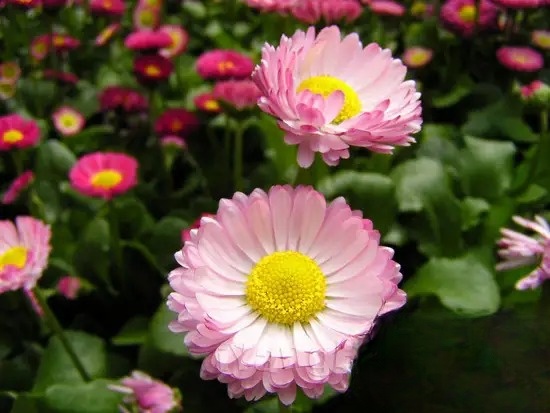

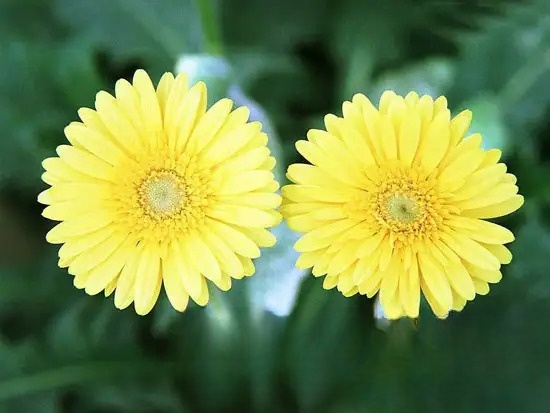
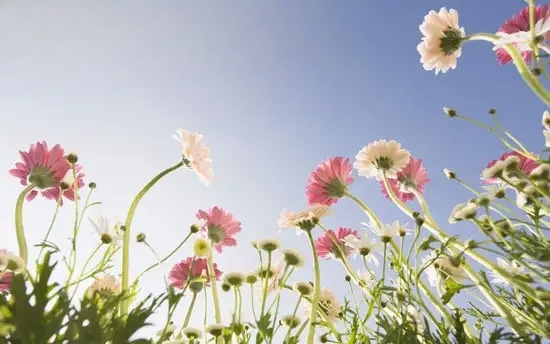
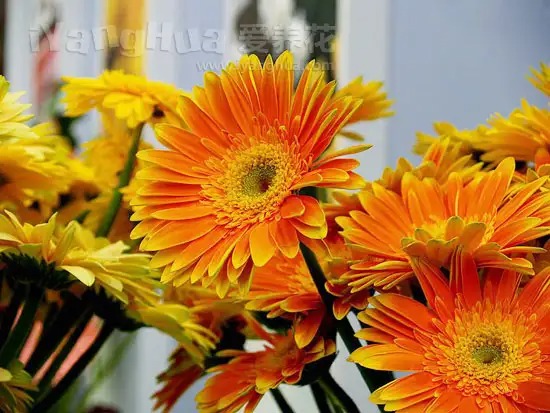
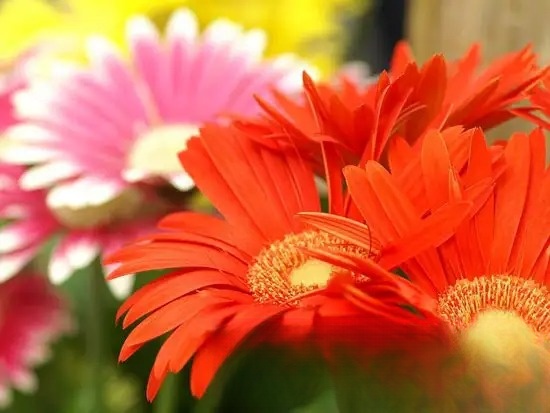
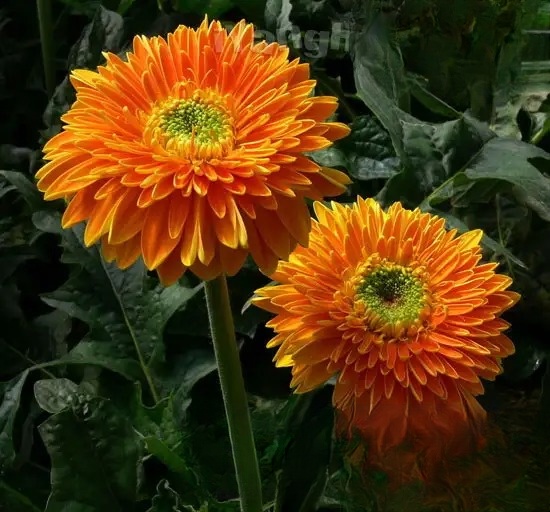
Plant it in a culture soil mixed with 5 parts humus, 2 parts perlite and 3 parts peat.
Watering should be sufficient during the growing season. From June to October, apply decomposed thin cake fertilizer water once every half a month. During the bud formation period, apply some phosphorus fertilizer appropriately to meet the needs of the flower buds. It should be noted that when watering and fertilizing the flowers, do not pour water and fertilizer on the leaves and buds to avoid rotting the flowers and leaves.
The growth of gerbera is closely related to light. If there is insufficient light, the plant will grow weak, with small and pale flowers. When the temperature is between 12-15℃, the plant will enter a dormant period. When the temperature is below 7℃, it will stop growing. If the room temperature can be kept above 12℃ in winter, it can continue to bloom.
If root rot or downy mildew occurs during the growth period, the diseased plants should be removed in time. For mild cases, Bordeaux liquid can be sprayed for prevention and control. If there are insect pests, dichlorvos diluted solution can be sprayed to kill them.
If the branches and leaves of the plant are too lush and cover each other, you can remove some of the old leaves.
Gerbera can be propagated by sowing and division. Spring sowing can be done from March to May; autumn sowing can be done from September to October. The seeds will germinate at 18-20℃, and when the seedlings grow 2-3 leaves, they can be planted in pots. Division propagation is done from March to May.
There are three main reasons for the root rot of African daisy:
(1) Excessive watering during the dormant period can cause the roots to rot. Therefore, do not water during the dormant period unless the soil is dry.
(2) The potting soil is not suitable. If you choose a potting soil that is heavy and has poor drainage, it will easily cause root rot. Therefore, it is better to choose a loose, well-drained leaf mold or sandy soil.
Alias: Petunia, Lingzhi Peony, Shuttlecock Flower, Dwarf Trumpet, Sweet Potato Flower, and Zhuanyu Chaoyan
Origin: South America
Type: Flowering Plant
Flowering Period: April-October.
Sunlight: Long-day plant, requires strong light.
Temperature: Likes warmth, not cold-resistant.
Soil: Suitable for loose, fertile, well-drained culture soil.
Water: Likes dryness, avoids waterlogging and rain.
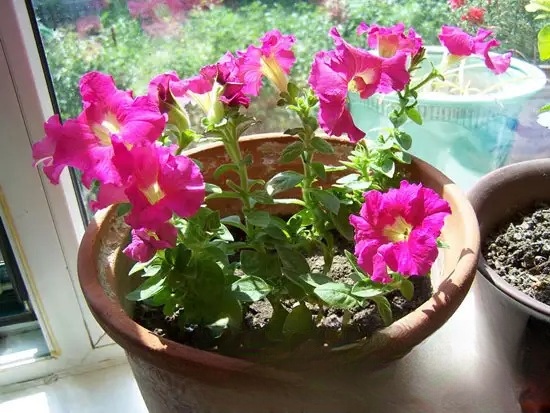
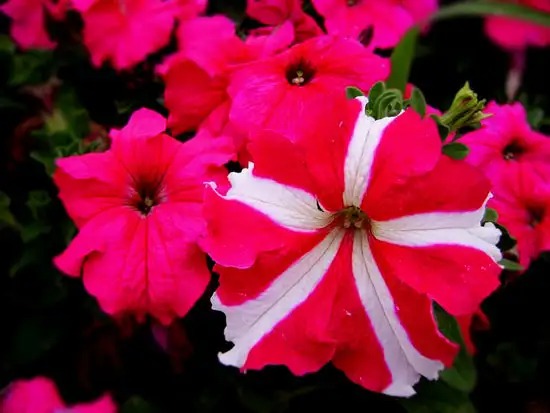
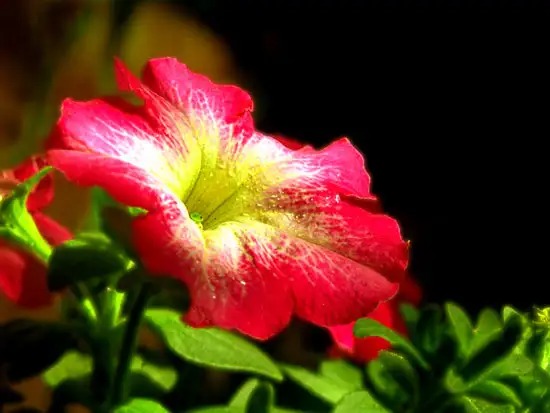
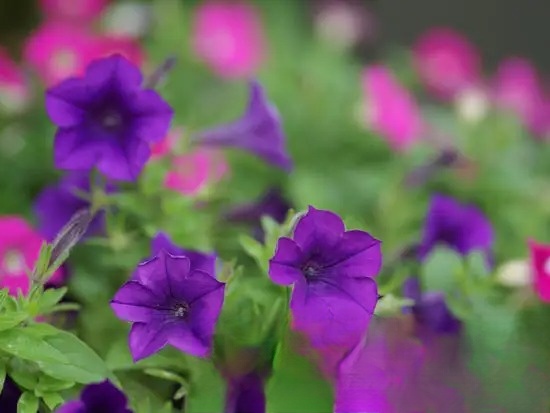
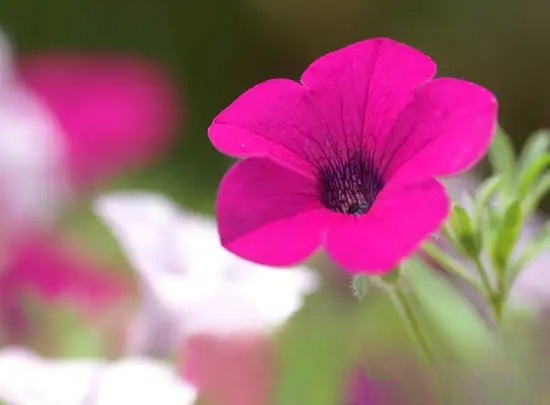
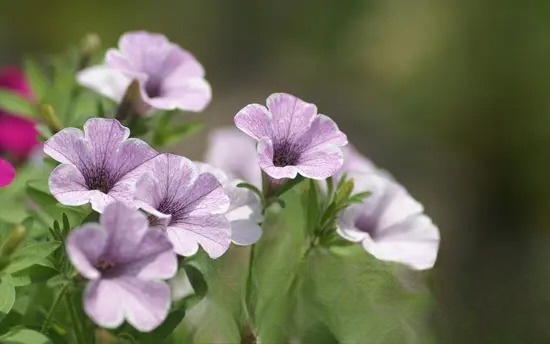
Tips for growing flowers:
It requires slightly acidic, loose, fertile, well-drained soil. The potting soil can generally be prepared by mixing half sandy loam and half leaf mold.
Petunia has a long flowering period and needs constant nutrition to continue flowering. Therefore, during the growth period, it is generally applied with thin liquid fertilizer once every 10 days or so. During the bud formation period, more phosphorus fertilizer should be applied to facilitate the flowers to be more colorful.
Watering should be done in moderation to prevent excessive dryness or wetness. Plants that are too dry are prone to withering, and plants that are too wet are prone to root rot. In summer, when the weather is hot and evaporation is the greatest, watering should be added in time to keep the pot soil moist without water accumulation. Drainage should be done in time to prevent waterlogging during the rainy season.
Petunia is a long-day plant that requires strong light conditions for photosynthesis to proceed smoothly. Therefore, whether it is potted or planted in the ground, it needs to be given sufficient light. If there is sufficient sunlight, it will grow vigorously, with lush leaves and abundant flowers; if there is insufficient light, the branches and leaves will grow too long, and there will be few flowers or poor quality flowers. If it can be given more than 12 hours of light a day and the night temperature is above 10℃, it can bloom all year round.
When the seedlings grow to about 10 cm in height, they should be pinched to encourage the sprouting of side branches, which will result in more flowers. If there is no need to keep seeds after each flower withers, the remaining flowers should be cut off in time and the branches should be shortened, so that side branches can continue to sprout and bloom continuously.
Alias: Willow Peach, Willow Leaf Peach, Half-year Red
Origin: India, Iran
Type: Flowering Plant
Flowering Period: June-October
Sunlight: Likes sunshine
Temperature: Likes warmth. In the south of the Yangtze River Basin, it can safely overwinter in the open field. In the northern region, it is only suitable for potted plants and moved indoors in winter.
Soil: It is strong and has no strict requirements on soil. It can grow normally in light alkaline soil.
Water: Likes water, but is afraid of waterlogging.
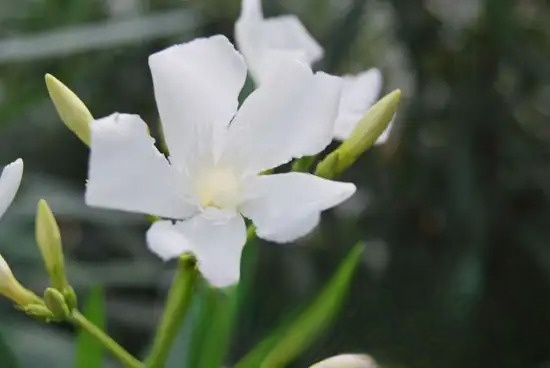
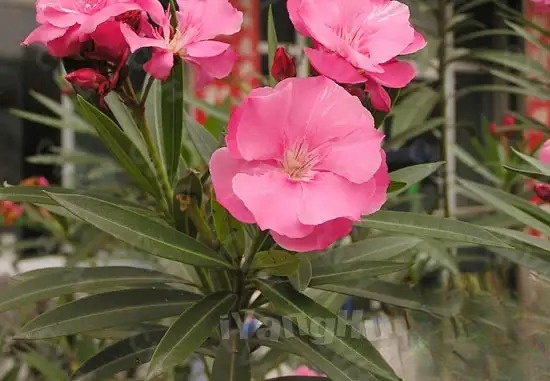
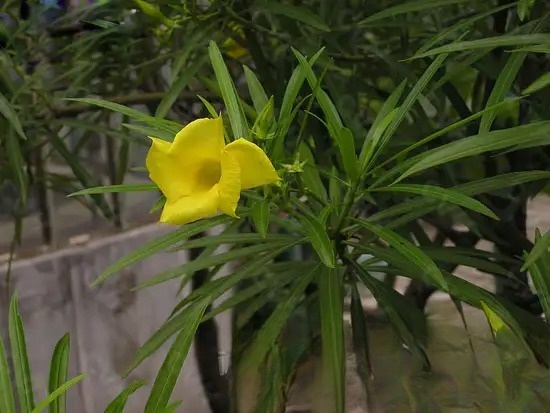
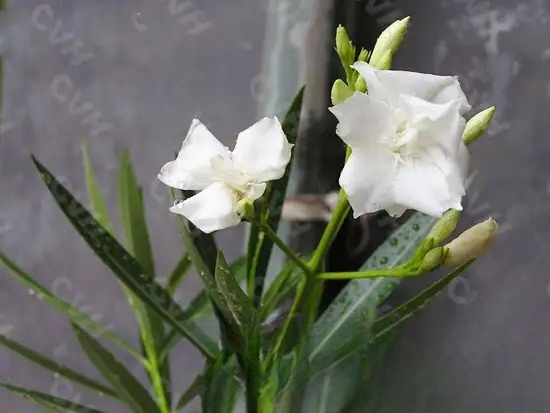
Tips for flower cultivation:
In the north, oleander is usually planted outside in mid- to late April. Repot before planting (it can be repotted once every 2-3 years), and cut off rotten roots and overly dense roots when repotting. The potting soil can be 5 parts garden soil, 4 parts sandy soil, 1 part cake fertilizer powder, or a mixture of 4 parts leaf mold, garden soil, 2 parts of decomposed manure soil, and 2 parts of sandy soil, and bone meal is placed at the bottom of the pot as base fertilizer. After repotting, water thoroughly and place in a ventilated sunny place.
Oleander likes fertilizer, and can be applied with thin liquid fertilizer every 20 days or so from the time it leaves the house until the flowers wither (frost). After the beginning of autumn, oleander grows rapidly, and at this time, it can be applied with fertilizer and water every 15 days or so until it is brought indoors.
Although oleander likes water, it is afraid of waterlogging. When it rains continuously, the water in the pot should be dumped in time to prevent root rot. If you water too much, the leaves will turn yellow and fall off, affecting flowering the following year. In spring and autumn, water when the soil is dry and wet to keep the soil moist. Summer is the period when oleander grows vigorously and blooms, so it needs more water. It is advisable to water it once in the morning and evening every day, and pay attention to spraying the branches and leaves frequently to keep the leaves fresh and green. Bring it indoors in mid-October, and control watering after entering the room. Avoid excessive watering, otherwise it is easy to rot the roots and fall off the leaves, affecting growth the following year.
Oleander likes sunlight, so it needs to be placed in a sunny place during its growing period, otherwise the flowers will be few and light in color.
The room temperature in winter should not be lower than 0℃. If the temperature is too high, it will consume nutrients and be detrimental to growth and flowering in the second year.
Oleander has three leaves arranged in whorls, which is a typical three-branched branch. After each pruning, three new branches grow from the stem nodes. People often use this branching characteristic to perform shaping and pruning, so that each trunk retains three main branches, and each main branch has three branches, which is commonly known as the "three-branched nine-top" tree shape.
After the potted oleander survives, the first pruning can generally be based on the height of the plant and personal preference. The main trunk is selected to be topped with 30-40 cm to promote the sprouting of side branches. When the new branches grow to 4-6 cm long, select 3 thick branches that are suitable for the pot, and remove the rest. At this time, fertilizer and water management should be strengthened. The second pruning should be carried out in July depending on the growth of the plant. Each side branch is topped with 10-15 cm, and 3 branches are selected on each side branch. After such pruning, it becomes the "three branches and nine tops" tree shape that people like. After pruning, it can be planted in the ground in summer and transplanted into a flowerpot in autumn. In this way, when it blooms in the second year, the flowers are evenly distributed and the crown is neat and beautiful.
Oleander often blooms but does not bear fruit, so it is often propagated by cuttings. Hardwood cuttings are best done in early April, while softwood cuttings are best done in June or July. Cut strong one-year-old branches into 15-20 cm long stem segments, cut off the upper leaves, and soak them in clean water to promote rooting. The water depth should be 1/3 of the cuttings, and the water should be changed every 2 days. Soak the cuttings in water for about 10 days. When small white spots appear on the water-soaked skin, insert them into plain sandy soil. They will take root in about half a month and can be transplanted after 1 month.
Other names: Sword pineapple, tiger pineapple, flower leaf orchid
Origin: Central and tropical areas of South America
Type: foliage plant
Flowering period: September-October
Sunlight: Tolerant to shade, afraid of direct sunlight
Temperature: Prefers warm, humid and sunny environment, not cold-resistant
Soil: Loose, fertile, well-drained leaf humus is preferred for cultivation
Water: Prefers humidity.
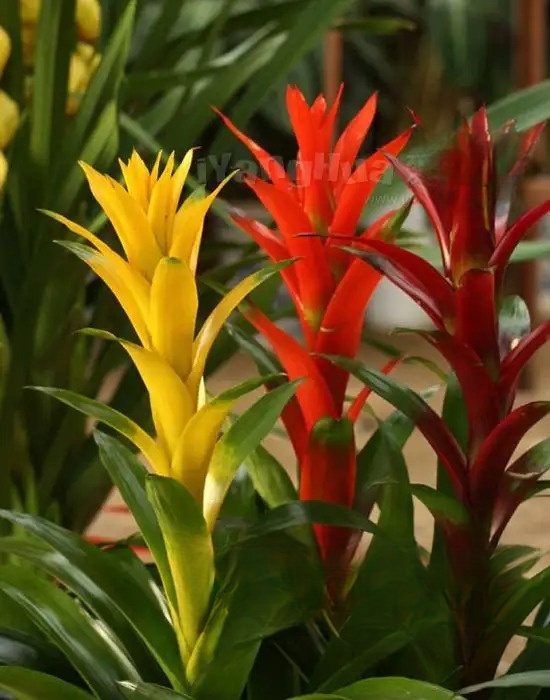
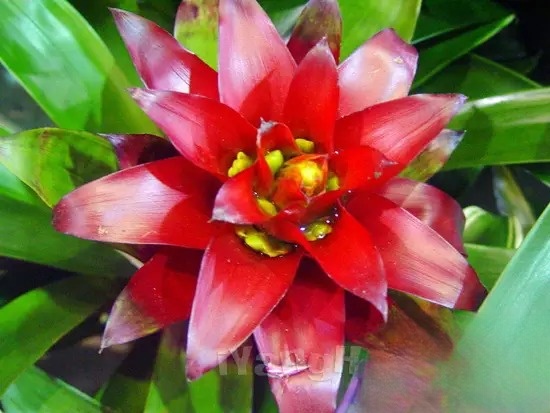

Tips for growing flowers:
Use fern roots, moss, bark blocks or peat potting. Generally, 70% leaf mold or peat soil is mixed with 30% river sand.
During the vigorous growth period, apply decomposed thin cake fertilizer water once a month or spray compound fertilizer on the leaves by foliar fertilization, and add phosphorus and potassium fertilizers 2-3 times. Stop fertilizing in winter. If conditions permit, spray nutrient solution once every half a month to ensure vigorous growth. Unlike other plants, fertilizer solution can be applied to the pot soil and leaf tube at the same time.
During the vigorous growth period, sufficient watering is required. Generally, the cup at the base of the plant should be kept full of water, but the pot soil should not be too wet. Reduce watering in winter. Watering can be appropriately reduced during the flowering period. Spray water on the leaves during the growing season.
The suitable temperature for the growth of Lisui pineapple is 20-25℃. It is not cold-resistant and should be kept indoors in winter. If the room temperature can be kept above 15℃ in winter, it can continue to grow. If the room temperature is lower than 12℃, it is susceptible to cold damage.
The pineapple likes bright sunlight, and needs proper shade in summer and at noon when the light is strong. In winter and spring, it sees more sunlight. If there is insufficient light, it cannot bloom normally, and cannot fully show the bright red color, but will appear purple-red, thus reducing its ornamental value.
Common leaf spot diseases can be controlled by spraying 500 times diluted 50% thiophanate wettable powder.
Sometimes there are whiteflies and scale insects , which can be treated with 40% oxidationSpray with 1000 times diluted dimethoate emulsion.
The common method of propagation of the pineapple is division, which is best done in spring when repotting. Lift out the mother plant and cut off the daughter plants on both sides. If they have grown young roots, it is best to cut them with the roots. After the wounds are slightly dried in the shade, they are potted separately. The seedlings should be planted in a mixture of leaf mold and peat soil. After potting, shade should be provided and the leaves should be sprayed with water. The potting soil should not be too wet. After the roots are rooted, normal management can be carried out.
Origin: Sichuan, Guangdong, Yunnan, China
Type: Flowering plant
Flowering period: August-October.
Sunlight: Likes sunshine, slightly shade-tolerant.
Temperature: Likes warmth, not cold-tolerant. The above-ground part of the Yellow River basin often freezes to death in winter, but sprouts from the roots in spring and grows rapidly.
Soil: It is suitable to be planted in fertile, well-drained sandy loam.
Water: Tolerant to moisture and drought.
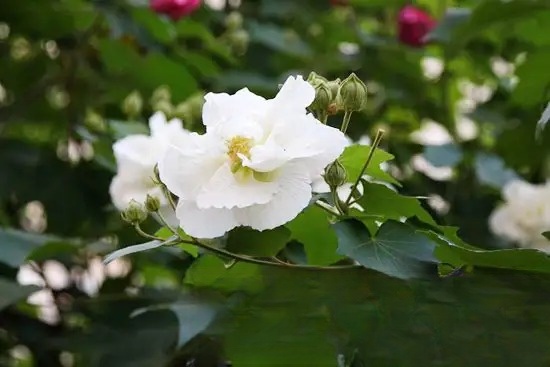
Tips for growing flowers:
Hibiscus grows robustly and requires little care. For potted hibiscus, it is advisable to use a large wooden pot. The potting soil can be a mixture of 7 parts garden soil and 3 parts compost soil.
After overwintering indoors, change the soil in the pot before moving indoors in the spring of the following year. Add new culture soil and replant it back in the original pot (it is advisable to change the pot once every 2-3 years) and place it in a sunny place for normal management.
When the rainy season comes, apply liquid fertilizer mainly containing phosphorus and potassium once to meet the needs of flower bud differentiation.
After planting, place it in a sunny place and keep the soil moist. Water and loosen the soil frequently during the growth period.
After germination, leave 4-6 strong buds and remove the rest at any time. When it grows to 30 cm in height, leave 2-3 leaves at the base and cut off the branches to promote branching.
If there are too many flower buds during the flowering period, they should be thinned out appropriately to make the flowers larger and more colorful. After the flowers fade, all branches should be cut short at 5-8 cm from the soil surface, and then placed in a cold room for the winter.
Hibiscus can be propagated by many methods such as cuttings, division, layering, etc., with cuttings being the main method.
(1) Cutting method: It is best to do it in autumn after the leaves of Hibiscus have fallen. First, select the strong branches of the current year, cut them into 15-20 cm segments, and put them in a sunny place in the sand to overwinter. In February or March of the next spring, take out the cuttings and insert them into the open-air seedbed. The part exposed above the ground should not exceed 10 cm. Cover them with some grass to prevent spring cold. The survival rate of cutting propagation can reach more than 95%.
(2) Division method: It is best to do this in early spring before the old plants sprout. First, dig out all the old plants from the soil, divide them into several plants along the direction of their roots, and then plant them in soil with sufficient basal fertilizer. It is best to plant them in wet soil and water them after one week. The shoots propagated by division grow very fast and can bloom in the same year.
Origin: China
Type: Foliage Plant
Flowering Period: April-May, bright red leaves sprout on the branches in spring, slightly purple in summer, and red in late autumn.
Sunlight: Prefers shade, avoid strong sunlight.
Temperature: Has a certain degree of cold resistance.
Soil: Suitable for leaf mold and garden soil.
Water: Prefers moisture.
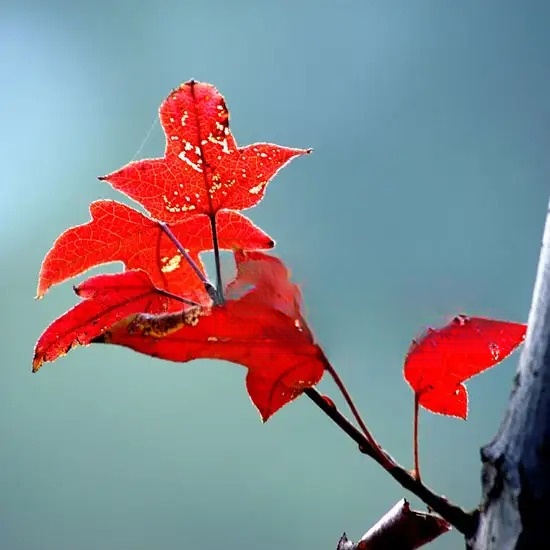
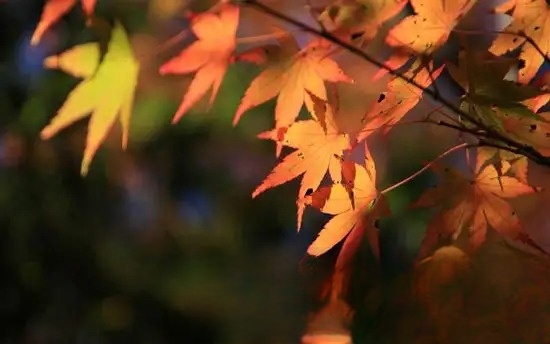
Tips for flower cultivation:
For potted red maple, you can choose a mixture of leaf mold, garden soil and a small amount of river sand, and add a small amount of bone meal as base fertilizer. Because its root system has a strong ability to extend, it is advisable to use a deep barrel pot as a container.
From May to August every year, generally apply a thin cake fertilizer water once a month. From September onwards, apply liquid fertilizer mainly composed of potassium fertilizer, such as 1% potassium sulfate solution or wood ash extract, to facilitate the bright red color of the leaves.
Red maple likes moisture during its growth process. However, except for sufficient watering in summer, it should not be watered too much at other times. It is better to keep the soil in the pot moist, which is conducive to maintaining the beautiful posture of the tree.
During the growing period, place it outdoors in a sunny place sheltered from the wind. Move it to a semi-shaded place in summer to avoid exposure to strong sunlight.
Red maple can be propagated by cuttings, grafting, or sowing.
Cutting propagation is relatively simple and easy to do. It is suitable for gardeners who lack flower-growing experience, and is more suitable for making small bonsai or potted plants. Cutting is generally carried out during the rainy season from June to July. Select strong branches of the year, cut 20-25 cm sections as cuttings, apply some plant ash on the cut ends for disinfection, and then insert them into a medium of half vermiculite or perlite and half pond mud. Pay attention to sun protection and shade, and keep the medium moist. After about 1 month, roots will gradually take shape. When the seedlings grow up a little, they can be transplanted and then transferred to normal management.
Origin: South Africa
Type: Flowering Plant
Flowering Period: Between summer and autumn, the flowering period can last up to two months.
Sunlight: Likes plenty of sunlight, but cannot tolerate strong sunlight. In places with weak light, it grows thin, sprouts less, and blooms abnormally or not at all.
Temperature: Likes warmth in winter and cool in summer.
Soil: It is advisable to choose a culture soil rich in humus and with good drainage and air permeability.
Water: Although it likes moisture, it is afraid of drought and waterlogging. If the pot soil is waterlogged, it is easy to cause root rot.
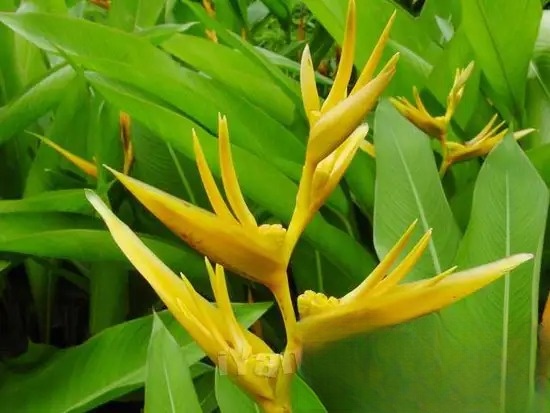
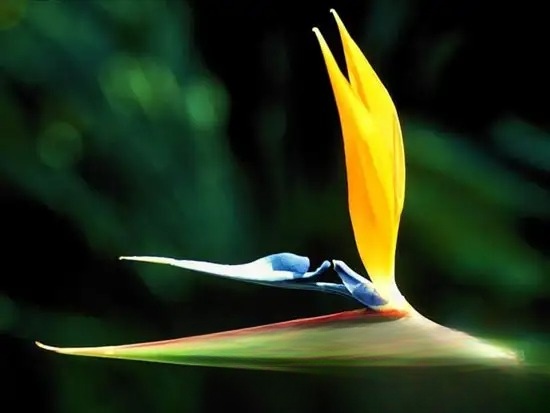
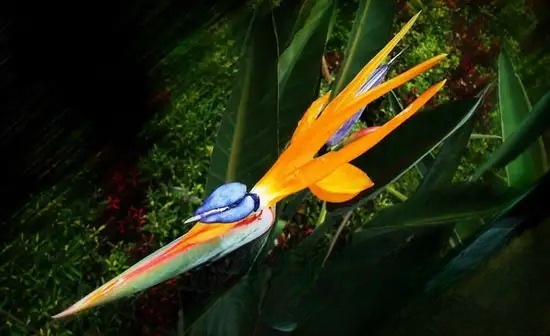
Tips for growing flowers:
Strelitzia has thick fleshy roots, so you can mix 5 parts of leaf mold or peat soil, 3 parts of garden soil, 1 part of decomposed manure soil, and 1 part of coarse sand. If the prepared culture soil has poor permeability and is watered too much, it is very easy to cause root rot.
Strelitzia reginae has a well-developed root system and grows quickly, so it needs to be repotted in time. Generally, it is advisable to repot once a year during the seedling stage. After flowering, the mature plant can be repotted once every year. When repotting mature plants, it is advisable to use a deep cylindrical pot, because this pot has a large internal space, which is conducive to the development of the root system in all directions.
Strelitzia reginae prefers fertilizer and needs sufficient nutrition. During the growth and development period, it is advisable to apply thin cake fertilizer water once every two weeks. From the formation of flower stems to the peak flowering period, 0.5% superphosphate can be added to the fertilizer liquid, which will make the flower color more colorful. If you do not plan to keep seeds after the flowers wither, you should cut off the remaining flower stalks in time to reduce nutrient consumption. Stop fertilizing after mid-October. In the northern region, bring it indoors in mid-to-late October. Stop fertilizing during the wintering period. Keep the room temperature above 10℃ to safely overwinter.
In terms of water management, the right amount of watering should be mastered. The amount of watering should be determined by seasonal changes, plant growth conditions, and the actual dryness and wetness of the soil. Generally speaking, watering should be done when the soil is dry and when the soil is wet. Watering should be sufficient in summer. In spring and summer, water should be sprayed on the leaves and on the ground around the flower pots frequently to increase the air humidity and create a cool environment, which is conducive to its growth and development. Watering should be reduced after late autumn, and watering should be controlled in winter to keep the soil in the pots slightly dry.
Strelitzia reginae needs to be given sufficient light in winter, spring and autumn. If there is insufficient light, the plant will grow thin and weak, and will not bloom or will not bloom. In summer, it is necessary to pay attention to shade. It is best to cultivate it in a shade shed or under the shade of a large tree. It can also be placed indoors in a well-ventilated place with bright scattered light.
Strelitzia reginae likes warmth and fears cold. The suitable temperature for growth is 18-24℃ from March to October, 13-18℃ from October to March of the following year, and should not be lower than 8℃ in winter. It can be cultivated in the open field in the south, and in the areas north of the Yangtze River Basin in greenhouses. The suitable temperature for flower buds is 23-25℃, and the temperature should be kept stable and rise slowly during the flower bud differentiation period.
Strelitzia reginae is prone to scale insect damage, which can be removed manually after discovery. In the hot summer, scale insects are active, so you can use 800 times dilution of phosmet to spray once a week for prevention and control.
Origin: South Asia, Eastern Africa and Tropical Americas
Type: Flowering plant
Flowering period: Mid-to-late July to Frost.
Sunlight: Prefers a sunny environment, can also grow in the shade, but the plant is thin and has few branches.
Temperature: Prefers warmth and is afraid of severe cold.
Soil: Prefers loose soil rich in humus, and should not be planted in low-lying waterlogged areas.
Water: Prefers a slightly dry environment, avoids waterlogging.
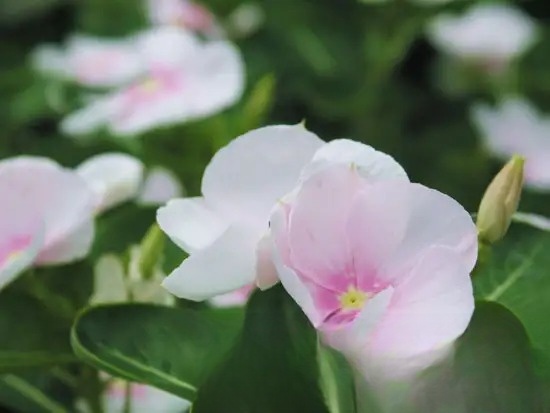

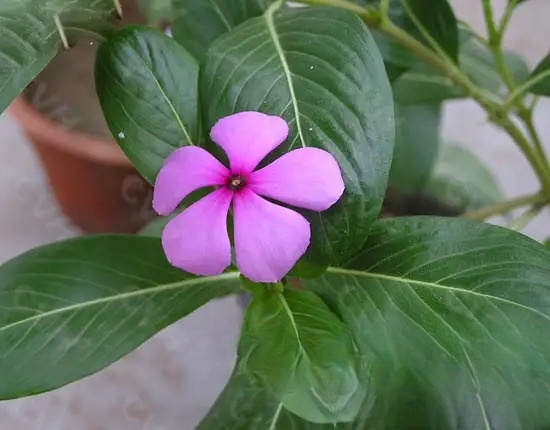


Tips for growing flowers:
The potting soil for growing Catharanthus roseus should be fertile, loose, and well-permeable. If the soil is alkaline and hardened, with poor water permeability and poor ventilation, the plant will grow poorly, with yellow leaves and no flowers. Move it indoors in winter and move it outdoors for maintenance and management in spring. Generally, the pot should be changed once every two years.
Some nitrogen fertilizer should be applied during the growth period, and some phosphorus fertilizer can be added during the bud formation period.
Do not water too much at ordinary times, as too much moisture will affect growth and development.
Pay attention to ensure that the plant is given sufficient light. If it is kept in the dark for a long time, the leaves will turn yellow due to insufficient light. In winter, it should be moved indoors, the room temperature should be kept above 5℃, and watering should be controlled. The soil in the pot should be kept dry. If the room temperature is kept at around 15-20℃, it can continue to bloom.
Catharanthus roseus is a herbaceous plant and is more suitable for potted plants, but care must be taken not to let the plant grow too tall, which will affect interior decoration and appreciation. Therefore, after it is potted and survives, it must be pinched several times to promote more branching and flowering, and the remaining flowers must be cut off after flowering.
Catharanthus roseus can be propagated by sowing or cuttings. Sowing is best done in the greenhouse in early spring. The optimum temperature for germination is 15-18℃. When the seedlings grow 4-5 true leaves, transplant once. When they have 6-7 true leaves, plant them. It is best to plant them on rainy days. In spring, take the young branches from the overwintering old plants and plant them in a hotbed. The optimum temperature for rooting is 20-25℃.
Origin: Japan and Taiwan
Type: Foliage Plant
Flowering Period: September-October
Sunlight: Extremely shade-tolerant, avoid strong sunlight.
Temperature: Likes warmth, not cold-tolerant, afraid of extreme heat.
Soil: Requires well-drained and fertile sandy loam.
Water: Adapts to humid environment, not tolerant to early blooming.
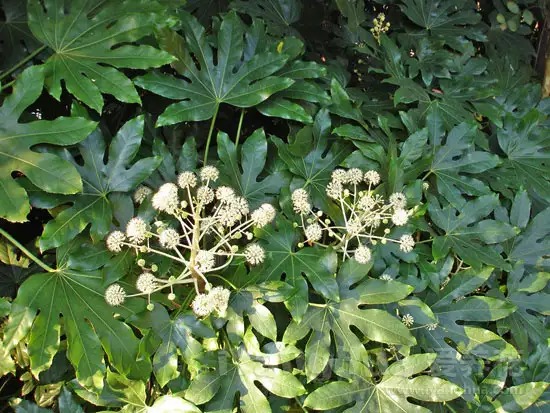
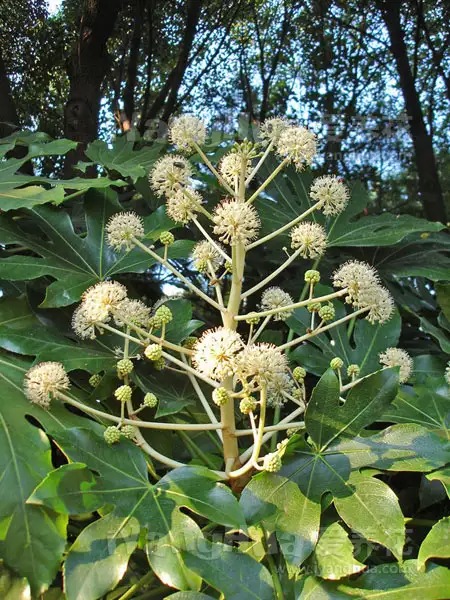

Tips for growing flowers:
Potted plants can be made of leaf mold (or peat soil) mixed with about 1/4 river sand and a small amount of cake fertilizer. Generally, the pot can be changed once every 2 years.
During the peak growing season, apply thin liquid fertilizer or compound flower fertilizer 1-2 times a month.
Watering should be alternated between dry and active periods. More water should be given during the growth period of new leaves. In the hot summer and dry seasons, in addition to sufficient watering, water should be sprayed on the leaves and on the ground around the plants every day to increase the air humidity.
Flavoured Aglaonema is a strongly shade-bearing tree species and can be cultivated indoors in a place with bright scattered sunlight all year round. In winter, it should be placed in a well-lit place indoors and the room temperature should be kept between 10-12℃.
Origin: Australia, New Zealand, Indonesia and Taiwan
Type: foliage plant
Flowering period: ---.
Sunlight: Likes light, can also tolerate shade.
Temperature: Likes warmth.
Soil: Grows in deep, fertile acidic soil, slightly tolerant to barrenness.
Water: Likes a humid environment, has a certain ability to tolerate early.
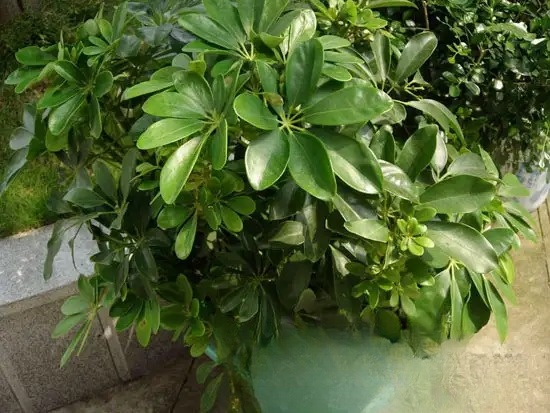
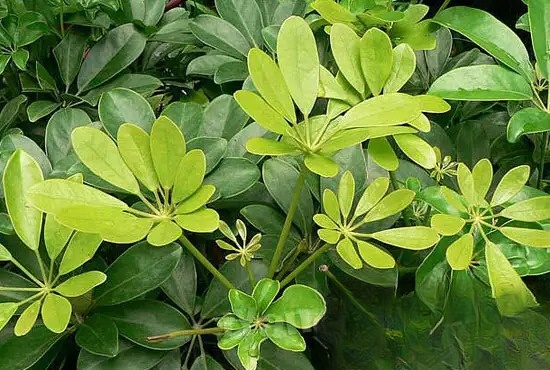
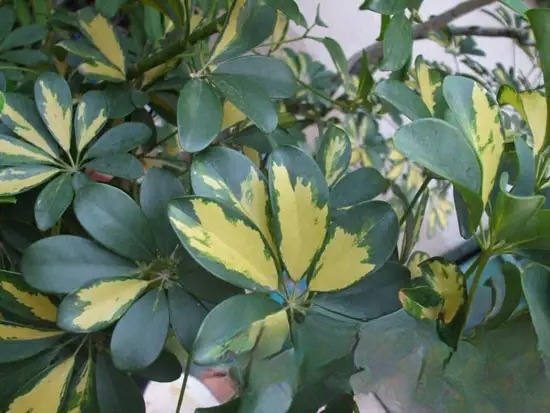
Tips for growing flowers:
Schefflera requires deep, loose and fertile soil. For potted plants, you can generally choose leaf mold or peat soil, garden soil and mix about 1/4 river sand or perlite. To make it fertile, add a small amount of cake fertilizer powder as base fertilizer.
During the growing period, apply thin liquid fertilizer once every 3-4 weeks.
Schefflera likes moisture, so during the growing season it needs to be watered sufficiently and attention should be paid to increasing the air humidity. Water should be sprayed on the leaves frequently to maintain a moist environment which is beneficial to its growth. If the potting soil lacks water, it is easy to cause leaf fall, and if the air is dry, the leaves will easily fade green and turn yellow.
Schefflera prefers semi-shade and should be placed under bright scattered light. When the light is suitable, the leaves are bright green and can be appreciated for a long time. In winter, it can be moved to the vicinity of the south window for cultivation so that it can receive more sunlight and the leaves will be bright. It is best to move the flower pot outdoors in spring and autumn every year for a period of time under well-ventilated and appropriate light conditions, but be sure to avoid sunlight exposure during outdoor maintenance, otherwise the leaves will easily turn yellow, reducing the ornamental value. Move it back indoors after summer and winter, so that the plant grows strong and the leaves are more green and lovely. Schefflera is not cold-resistant, and the room temperature needs to be kept above 10℃ in winter; if the room temperature is below 8℃ for a long time, the leaves will gradually turn yellow; if the temperature drops below 0℃, the leaves will fall off, and the stems and branches will dry up and die. Therefore, it is important to maintain a suitable temperature for winter maintenance. No fertilizer is needed at this time, and pay attention to controlling watering.
If aphids harm tender shoots and scale insects harm leaves, you can use 800 times dilution of fenitrothion and oxidizedSpray with 800 times diluted dimethoate emulsion.
Schefflera arborvitae is prone to sprouting leggy branches, so it is necessary to pay attention to shaping and pruning of mature plants frequently to keep the plant shape neat and beautiful. For perennial old branches, when the plant shape grows too large, it can be re-pruned before the new buds sprout every year in combination with repotting. Cut off the upper branches and leaves and part of the old roots, repot, add new culture soil and keep the potting soil moist, and new branches will sprout from the old branches soon. At this time, you can choose to keep two symmetrical new branches to cultivate into a two-trunk symmetrical shape; you can also choose to keep one high branch and two low branches in a triangular shape, so that the old plant can be rejuvenated and the ornamental effect can be improved. Generally, shaping and pruning are combined with cutting propagation, and the pruned branches can be used for cuttings.
Schefflera can be propagated by cuttings or sowing.
(1) Cutting method: In late June, select the middle and lower sections of semi-lignified branches of the current year, cut them into a 10 cm long cutting, leave 2 leaves on the top, and cut off 1/2 of the leaflets. The cuttings will take root 40-60 days after cutting.
Origin: Peru, Chile, Argentina
Type: ornamental plant
Flowering period: June-October.
Sunlight: Likes sunshine.
Temperature: Likes warmth, not cold-resistant.
Soil: It has low soil requirements and grows luxuriantly in fertile, well-drained deep soil.
Water: Likes moisture.
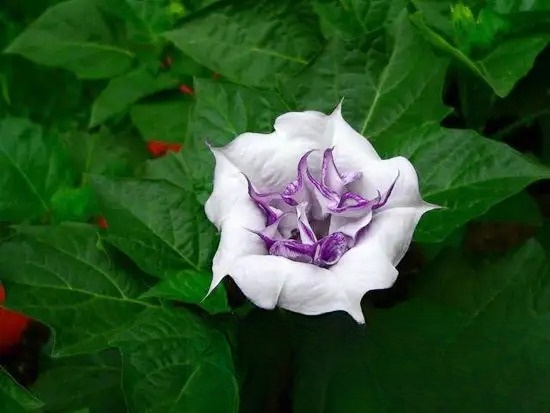
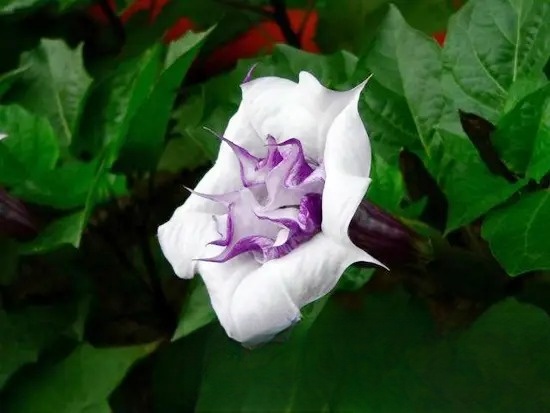
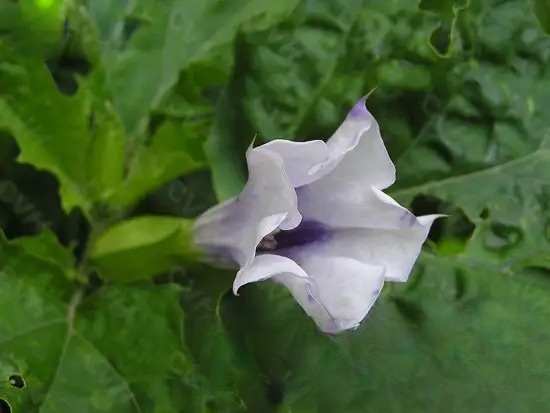

Tips for growing flowers:
Planting is relatively easy, just sow in fertile, well-drained soil.
For potted plants, you can sprinkle decomposed chicken manure and stable manure around the pot as base fertilizer. Generally, buds and flowers bloom in June. If the fertilizer and water supply are appropriate, more flowers can be bloomed and new flowers can be bloomed continuously for a long time.
As the temperature rises, gradually increase the amount of watering to keep the soil moist, but not too dry or too wet, otherwise the leaves will turn yellow and fall off. In winter, reduce the number of waterings and just keep it from drying out.
Except for the high temperature and scorching sun in midsummer, when the flower pots should be placed in semi-shade, they should be given sufficient light at other times, and liquid manure should be applied every 7-10 days.
Before winter comes, move it to a sunny place indoors and keep the room temperature above 5℃. If it is lower than 4℃, it will cause yellowing or falling leaves.
After the mandsura is taken out of the house in spring, the dead branches should be pruned off. If the pot plant is too high or the feet are off, it will affect the appearance, so it must be properly shortened to promote the sprouting of new branches to renew the plant.
Origin: Northeast China, North China, Sichuan, Yunnan, Japan and North Korea are also distributed
Type: Flowering plant
Flowering period: May-October.
Sunlight: Prefers a sunny environment.
Temperature: Prefers a cool and humid climate, and is not tolerant to extreme heat and humidity. High temperature and high humidity are prone to diseases and insect pests. It is not very cold-resistant, and the minimum temperature for autumn sowing and wintering is 2-3℃.
Soil: It is not strict with soil requirements. Generally, the soil can grow with a little management, but it prefers soil rich in humus and well-drained.
Water: Prefers moisture and is afraid of dryness. Water should be watered frequently during the growing season, and pay special attention to the supply of water in the dry season.



Tips for growing flowers:
Dwarf varieties should be selected for potted plants. The potting soil should be kept moist and placed in a sunny, well-ventilated place for maintenance. Apply thin liquid fertilizer once every half a month for vigorous growth and abundant flowering. Change the soil once a year.
Chrysanthemums like fertilizer, so when planting, fully decomposed organic fertilizer should be applied as base fertilizer. After the seedlings are planted and the seedlings have grown, you can start to apply thin liquid fertilizer, and then apply topdressing once every month or so to promote strong plants, lush leaves, and bright flowers.
Asters have shallow roots and prefer moisture, but are afraid of dryness. During the growth and development period, they should be watered fully to keep the soil moist, and pay attention to inter-cultivation and moisture conservation. Too wet soil is prone to diseases. After budding, watering should be properly controlled to inhibit the elongation of the main branches.
The root system of aster is shallow. During the growing season, especially in summer, the soil surface temperature is high, which has a great impact on its growth and easily causes the lower leaves to turn yellow and fall off, causing the plant to fall off. After summer, it is advisable to cover the surface of the pot soil with compost, leaves or sawdust, pay attention to moisture retention and move to a semi-shaded place to prevent leaf shedding.
Chrysanthemums are more susceptible to diseases such as leaf spot , chlorosis, and rust. When diseased plants are found, they must be removed in time, and continuous cropping, waterlogging, poor ventilation, and high temperature and humidity environments should be avoided from the beginning; be careful not to contaminate the leaves when fertilizing; when it rains, prevent mud from splashing and contaminating the leaves and spreading pathogens.
Chrysanthemum is mainly propagated by sowing. It is sown in hotbeds or open-field nursery beds in spring from February to March. The suitable temperature is 18-21℃. It can germinate in 10-14 days. When the seedlings grow 3-4 true leaves, they are transplanted once. When the seedlings grow 6-10 true leaves, they can be transplanted and planted in the open field or pots. It takes about 100 days from the seedling stage to the flowering stage. Because the hot summer is not conducive to fruiting, if you want to keep seeds, you should sow them later, avoiding July and August. Chrysanthemum seedlings are very resistant to transplanting and easy to survive, but large seedlings should not be transplanted.
Origin: Southern Africa
Type: Foliage Plant
Flowering Period: ---.
Sunlight: Likes light, also tolerates semi-shade.
Temperature: Likes warmth, but not cold, 10℃, otherwise it will affect survival.
Soil: Suitable for well-drained soil.
Water: Suitable for dry environment, has strong tolerance to early.

Crystal palms are short and have shallow roots, so smaller and shallower pots should be used for potting. The potting soil can be sandy loam or mainly sandy soil with a small amount of leaf mold.
Usually only a lighter fertilizer is needed. In the growing season, a thin compound fertilizer solution can be applied once a month to meet the growth needs. When watering and applying liquid fertilizer, care should be taken not to contaminate the leaves, otherwise it will easily cause leaf rot.
After potting, do not water too much to prevent root rot. Wait until new roots grow out before switching to normal watering.
Usually, the flowerpot should be placed in a bright place indoors to cultivate it, which can make the leaves green and shiny. It can be exposed to some sunlight in winter and spring, but after summer, it must be shaded. If exposed to strong sunlight, the fleshy leaves will change from green to purple-red, and the leaf surface will lose its luster, reducing its ornamental value.
The suitable temperature for the growth of crystal palm is 20-25℃. In the hot summer, the plant is in a semi-dormant state. At this time, watering should be controlled, but water should be sprayed around the plant to prevent heat and cool it down. Soon the wilted leaves will come back to life.
Origin: Iran, Afghanistan and other Central Asian regions
Type: Fruit-viewing plant
Flowering period: Flowering period is June-July, fruiting period is September-October.
Sunlight: Prefers a sunny environment.
Temperature: Prefers warmth, and can be cultivated in the open field.
Soil: Suitable for loose and fertile calcareous soil.
Water: Relatively drought-resistant, but afraid of waterlogging.
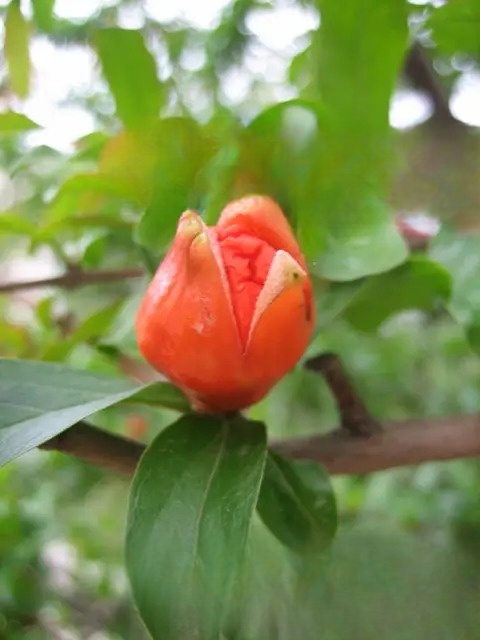
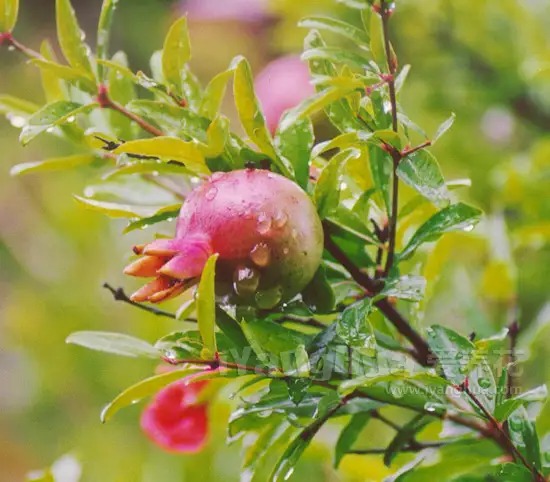
Tips for growing flowers:
For potted pomegranates, when repotting in early spring, you can apply decomposed bean cakes, soy sauce residues, etc. as base fertilizers, and apply phosphorus and potassium fertilizers 1-2 times before flowering. Apply thin liquid fertilizers once a month during the growth period. For ground-planted pomegranates, apply slow-acting organic fertilizers once a year after the leaves fall, and apply quick-acting mixed liquid fertilizers once each before germination, before flowering, and after the flowers fall.
Pomegranates should be watered moderately. If the soil is too dry, the buds will fall off, the fruit will dry up, and the fruit will drop. If the soil is too wet, the buds will fall off and the fruit will crack. Drain the water in time after rain to prevent root rot. Do not water too much during flowering to prevent buds from falling off.
Pomegranate is a strong sun-loving plant. It likes sunshine. As the saying goes, "The more sun a pomegranate is exposed to, the redder its flowers become, and the more fruits it will have." Experiments have shown that only when the sunshine is maintained for more than 5 hours a day can it have many flowers and bright colors. Because of this, when cultivating pomegranates, you must pay attention to placing them in a sunny place frequently. If there is insufficient light during the growth period, it is easy to cause leggy growth, less flowering and fruiting, or even no flowering and no fruiting.
The main pomegranate diseases include leaf fall, dry rot, sooty mold, and insect pests include the spiny moth, big bag moth, stem window moth, peach borer, aphids , red spiders , and longhorn beetles. Diseased and insect-infested fruits and dead branches and leaves should be removed in time, and controlled with drugs.
The most common is the peach borer, which has 2-3 generations each year and invades young fruits from the calyx in early June to early July. Control method: During the larval damage period, soak cotton balls in 300 times dichlorvos solution, and then insert the cotton balls deep into the calyx. When the larvae pass through the calyx, they will be poisoned to death. If the crown is sprayed with 800 times dichlorvos solution or 5000 times dichlorvos solution of 2.5% cypermethrin at the same time, the control effect will be better. Remove diseased and insect-infested fruits in autumn and cut off diseased and insect-infested branches in winter to eliminate overwintering pests.
Pomegranate flowers grow on branches of the current year, which sprout from the fruiting mother branches formed last year. The top buds of the fruiting mother branches and the several lateral buds below them are relatively large, and short new branches are drawn from them, which are the fruiting branches of the current year. According to the flowering and fruiting habits of pomegranates, dead branches, weak branches, root sucker branches, and branches that cross and disrupt the tree shape should be cut off from the base before germination in early spring, but the fruiting branches should not be cut short, otherwise they will not bloom and bear fruit. During the growth period, the upright and long branches with vigorous growth should be topped to control their growth and promote the fullness of the axillary buds at the base. Each fruiting branch usually has 2-5 flowers, among which the top flowers are the easiest to bear fruit. After the fruiting pomegranate blooms, the flowers and fruits should be thinned out in time. Small pomegranates generally do not need to be pruned too much. Only by topping them several times during the growth period to promote more branches and gradually grow into a spherical or short-stemmed flat-topped shape can the ornamental value be improved.
vine Origin: Central America, South America
Type: foliage plant
Flowering period: ---.
Sunlight: Prefers semi-shady environment.
Temperature: Prefers high temperature, not cold-resistant. If the room temperature is lower than 10℃ in winter, the leaves will turn yellow due to low temperature damage.
Soil: Prefers slightly acidic soil, preferably fertile, loose and well-drained sandy loam.
Water: Prefers moisture and fears dryness.
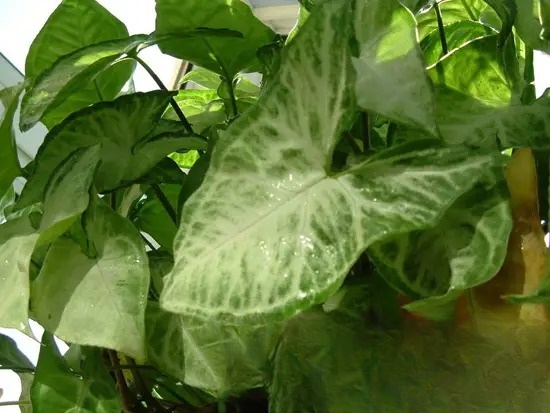
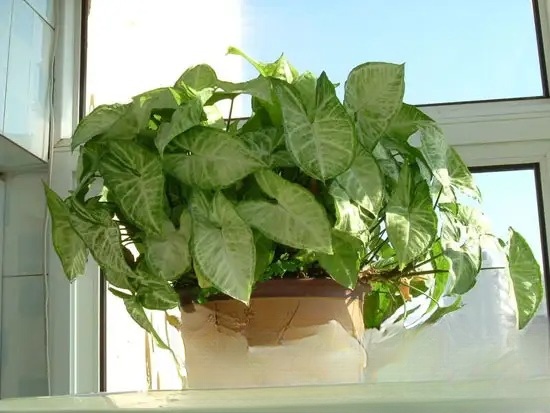
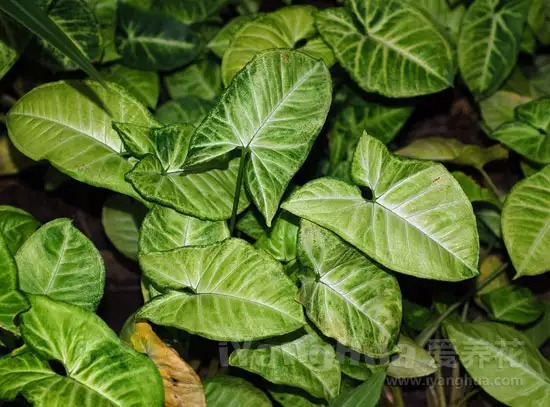
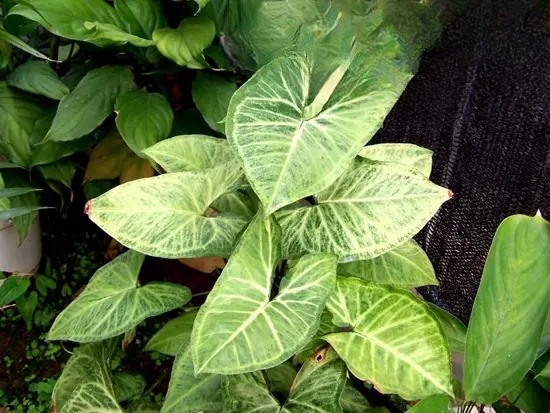
Potted Syngonium usually uses a 10-15 cm diameter pot, and a 15-18 cm diameter pot can be used for hanging pots. The pot soil is usually a mixture of leaf mold, peat soil and a small amount of coarse sand or perlite. If conditions permit, adding some pine needles will be more conducive to growth and development. At the same time, Syngonium is also suitable for soilless cultivation, especially sand culture and nutrient solution culture.
Apply thin liquid fertilizer once every 1-2 weeks during the growing season. Spray 0.2% ferrous sulfate solution once a month to keep the leaves green and lovely. If placed indoors and do not need to grow too fast, the amount of fertilizer must be controlled. To increase the ornamental effect and make the white spots on the leaves more prominent, reduce the amount of nitrogen fertilizer.
Water more during the growing season from March to September, especially in the summer when the plant grows vigorously. Water fully and keep the soil moist to facilitate the rapid growth of stems and leaves. If there is insufficient water or drought, the leaves will become rough and smaller. Do not make the soil too wet in winter, otherwise it will cause root rot and death or yellowing and falling of leaves in low temperature and humidity. Try not to use ordinary tap water for watering. It is more beneficial to growth to use warm boiled water or clean rainwater. Spray water on the leaves 2-3 times a day in summer and dry seasons to maintain high air humidity and clean leaves, which can promote the growth of strong and full leaves and have a better ornamental effect.
The vigorous growth period requires high temperature and high humidity. The optimum temperature for growth is 22-30℃. Syngonium has a short dormancy in winter. The stems and leaves stop growing below 15℃. It can safely overwinter above 10℃. The leaves will be damaged by frost below 5℃. New buds begin to sprout when the temperature exceeds 12℃ in spring.
Syngonium prefers a semi-shady environment. When cultivated at room temperature, 50%-60% of the sunlight needs to be blocked in summer, but no shading is required in winter. However, under bright light, the leaves are larger and the color becomes lighter; under semi-shady conditions, the leaves become smaller and the color becomes darker. Under low light conditions for a long time, the stems and petioles will elongate, the plant shape will become loose, and the new leaves will become smaller, affecting the ornamental effect.
It is suitable to be placed outdoors in semi-shade in summer. In winter, it should be moved indoors and placed in a place with sufficient diffuse light.
Common leaf spot and gray mold damage to Syngonium can be sprayed with 700 times dilution of 70% mancozeb wettable powder. In normal times, it can be sprayed with equal amounts of Bordeaux mixture for prevention.
Pests include whiteflies and thrips that damage stems and leaves. 40% oxidizedSpray with 1500 times diluted dimethoate emulsion.
The common propagation of Syngonium podophyllum is cutting, which is usually carried out from May to September. It can be cut from tender branches or buds, both of which are easier to root and survive. The method is: cut the tip or 2-3 nodes of the middle section of the stem, insert it into vermiculite or plain sand, cover it with plastic film, maintain appropriate humidity and temperature (about 20℃), and it will take root after 10-20 days.
This plant grows fast and can be propagated by division after 2-3 years, and division is best done in April.
In hot summer weather, you can also use the water planting method. If you use the right method, the plants will take root and grow in about 15 days.
Why are the leaves of Syngonium easily turned yellow when grown in the north?
Syngonium is native to the tropical rain forests of Central and South America. It likes high temperature and high humidity and is not cold-resistant. It likes semi-shade and avoids strong direct sunlight. If the above environmental conditions are not met during the cultivation process, it is easy to cause the leaves to turn yellow or even die. Specifically, the main reasons for the yellowing of leaves are:
(1) Soil alkalinity: Syngonium prefers slightly acidic soil, while the soil in most areas of the north is neutral or alkaline. Using this kind of soil to grow Syngonium will lead to a lack of iron in the soil that can be absorbed and utilized by the plant. This is one of the main reasons why the leaves of Syngonium turn yellow.
(2) Low temperature damage: Syngonium prefers high temperatures and is not cold-resistant. If the room temperature is below 10°C in winter, the leaves will turn yellow due to low temperature damage.
Origin: southern and Oceania, etc.
Type: ornamental flowers, foliage plants
Flowering period: May-September.
Sunlight: likes sunshine, and can also tolerate semi-shade.
Temperature: not cold-resistant, the suitable temperature for growth is 15-25℃.
Soil: potted ball orchids can use leaf mold (or peat soil) and coarse sand (or expanded perlite) as a substrate, and add a small amount of bone meal as base fertilizer.
Water: likes moisture, but too much watering will easily cause root rot.
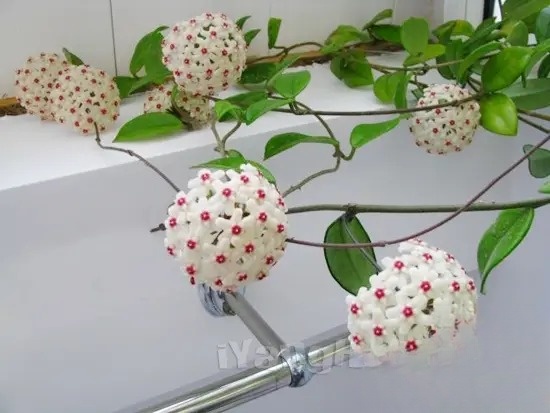
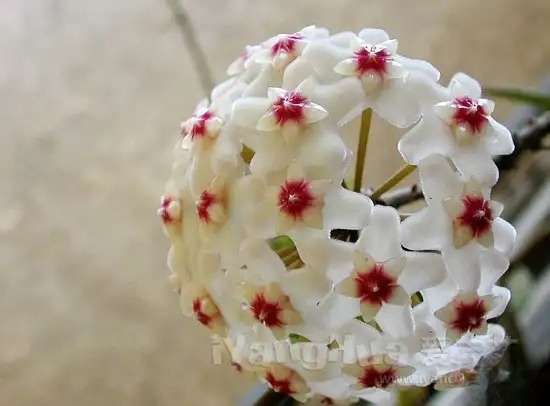
Tips for growing flowers:
The cultivation medium of Hoya can be a mixture of 4 parts peat soil, 3 parts sawdust and 3 parts vermiculite , and then put into the seedling tray. Take 15-20 cm long cuttings from the mother plant and insert them into the medium. During maintenance, it should also be noted that for plants with flower buds or flowering plants, the flower pots cannot be moved at will, otherwise it will easily cause the flowers and buds to fall off.
It is advisable to repot young Hoya plants once every spring, and mature plants can be repotted every 1-2 years. The flowerpot should be a tall pot. When repotting, cut off some old roots and plant 5-7 branches in each pot to facilitate balanced growth and luxuriant flowers and leaves.
Fertilization is mainly based on organic fertilizer or compound fertilizer; apply a thin cake fertilizer with nitrogen and phosphorus 1-2 times a month during the peak growth season. During the rest of the time, due to the slow growth, fertilization should be stopped to avoid wasting fertilizer or causing fertilizer damage.
Hoya is a succulent plant with more water in its leaves. Water it when the soil is dry and when it is wet during the growing season. Excessive watering can easily cause root rot, but watering is necessary in summer. Because it likes moisture, you should spray water on the leaves frequently to increase the humidity of the air.
In spring and autumn, it is best to place the ball orchid on a south-facing windowsill or near a south window in the house to see sunlight. This will keep the leaves bright green and bloom well. However, it should be moved to a shaded place in summer to prevent direct sunlight, otherwise the leaves will turn yellow easily. If it is placed in insufficient light for a long time, the leaves will become lighter and the flowers will be fewer and less bright.
Hoya is not cold-resistant, and the suitable temperature for its growth is 15-25℃. Even in winter, the room temperature should be kept above 10℃. If it is below 5℃, it will be easily affected by cold damage, causing leaf fall or even death of the whole plant.
After the flowers fade, they should be allowed to fall naturally. Do not cut off the flower stems, because the flower buds of the second year will mostly sprout in the same place. If you cut them without knowing this habit, it will affect the number of flowers in the next year. It is advisable to pinch the young plants early to promote the sprouting of new branches, and set up a support in time to allow them to climb and grow upwards.
Hoya is usually propagated by division or cuttings. Division is usually done in spring combined with repotting. Cuttings are usually done in late spring; cut a 10 cm stem tip, apply rooting agent on the cut and insert it into the soil for cuttings. Cultivate at 21°C for about 8-10 weeks, and roots will grow. After 2 weeks, when the roots are well developed, it can be transplanted.
Origin: Mexico, Guatemala and Colombia
Type: ornamental plant
Flowering period: June-October.
Sunlight: Likes light, but too strong sunlight is not good for flowering.
Temperature: Likes cool climate, not strict requirements on ecological factors, so it has strong adaptability. It is not strict on temperature during the growth period, and can grow normally between 5-35℃, but 10-25℃ is the most suitable.
Soil: It is most suitable to grow in loose, fertile, well-drained sandy loam, and needs crop rotation. It has moderate fertility requirements and can grow well at pH6.7-7.8.
Water: It is neither resistant to early nor waterlogging. Generally, the annual rainfall is between 500-800 mm and drought will not occur.
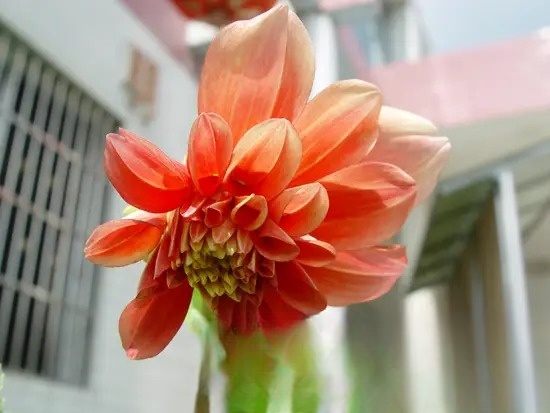
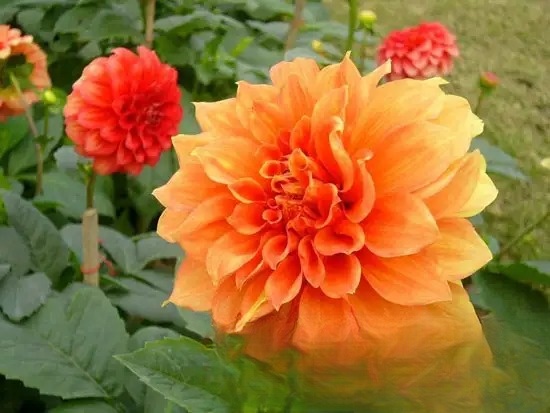
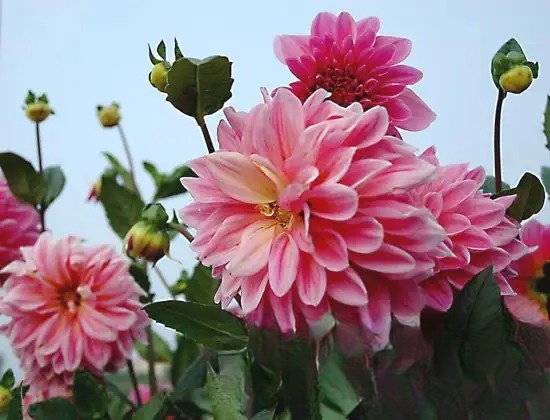
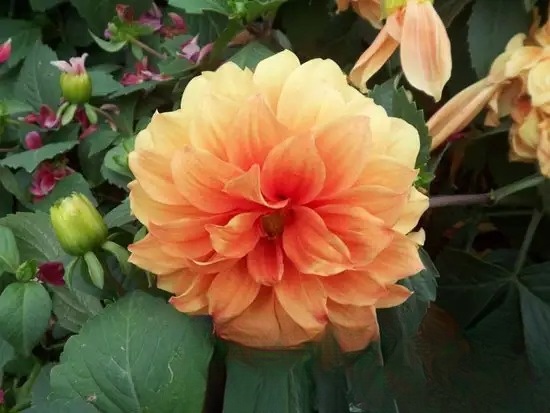
Tips for growing flowers:
Dahlias grow best in loose, humus-rich, well-drained sandy loam. The soil for planting potted dahlias is generally a mixture of 5 parts garden soil, 2 parts leaf mold, 2 parts sand and 1 part dry manure. Compacted soil is prone to waterlogging and root rot and should not be used. In daily management, the soil should be loosened in time to remove waterlogging from the pot, because the fleshy tuberous roots of dahlias are prone to rot when the soil contains too much water and the air circulation is poor.
Dahlia is a fertilizer-loving flower. From the seedling stage, it is generally recommended to apply thin liquid fertilizer every 10-15 days. After budding, apply fertilizer every 7-10 days, and stop applying fertilizer when the buds are translucent. It is also not suitable to apply fertilizer when the temperature is high. The amount of fertilizer should be determined according to the growth of the plant. Light and thin leaves indicate a lack of fertilizer; burnt edges or yellow tips indicate excessive fertilizer; thick leaves with deep green color indicate appropriate fertilization. The concentration of fertilizer should be increased from time to time, so that the stems can be thick and strong.
Watering: Dahlias like water but avoid stagnant water. They are afraid of both waterlogging and drought. This is because dahlias have fleshy tuberous roots. Excessive watering will cause the roots to rot. However, dahlias have lush branches and leaves, large evaporation, and need more water. If they wilt due to lack of water and are not replenished with water in time, and then exposed to sunlight, the edges of the leaves will dry up at the least, and the leaves at the base will fall off at the worst. Therefore, when watering, we must follow the principle of "dry thoroughly and water thoroughly". Generally, in the early stage of growth, the seedlings need limited water. On sunny days, they can be watered once a day, and the soil should be kept slightly moist. It is not suitable to be too dry or too wet. In the late stage of growth, the branches and leaves are lush and consume more water. On sunny days or north windy days, pay attention to the lack of water at noon or in the evening, and increase the amount of water appropriately.
Dahlias like light but cannot tolerate shade. If placed in shade for a long time, they will grow poorly, have weak root system, thin leaves and stems, small and light flowers, and some may not bloom. Therefore, potted dahlias should be placed in a sunny place. The leaves need to have sufficient light during the growth period, and the daily light requirement is more than 6 hours, so that the plants can thrive and the flowers can be large and full. If the daily sunlight is less than 4 hours, the stem and leaf branching and flower seedling formation will be affected to a certain extent, especially when it is cloudy and rainy with little sunlight, the flowers will not bloom well, the stems and leaves will grow poorly, and they are prone to disease.
(1) Powdery mildew: It harms leaves, tender stems, flower buds and other parts of the body. In the early stage of the disease, spray 800-1000 times diluted 70% thiophanate for prevention and control.
(2) Gray mold: During the rainy season or continuous rainy weather, brown or dark brown rot occurs on tender shoots, young leaves and flower buds, and they are covered with gray mold. After the disease occurs, remove the affected parts and spray 50% mancozeb 800-1000 times diluted.
(3) Bacterial wilt: a bacterial disease that infects the aboveground parts and tubers. This disease is more likely to occur in hot and humid weather with high soil moisture content. Use 1% formalin to disinfect the soil before planting, or remove the diseased plants in time after the disease occurs and spray 70% dichlorodiphenyltrichloroethane 600-1000 times diluted.
(4) Viral diseases: They are spread by infected insects, grafts and sap. Spray pesticides in time to eliminate the transmitting insects.
(5) Dahlia borer: The larvae feed on the leaves, stems and center of the flower. When they grow up, they bore into the stems and cause damage. In severe cases, the entire plant will die. They can be killed manually before the larvae bore into the stems, and 100 times diluted 50% fenitrothion can be sprayed; after the larvae bore into the stems, 30%-50% dichlorvos emulsion can be injected.
The pruning of potted dahlias should be flexibly controlled according to the variety. Generally, large varieties are shaped into single stems, and medium-sized varieties are shaped into four stems. Single stem pruning means retaining the terminal bud and removing all axillary buds to concentrate nutrients, forming a single stem dahlia with a short plant and large flowers. Four stem pruning means pinching the seedlings and retaining two nodes at the base to form four side branches, each of which has a terminal bud, which can form a potted dahlia with four stems and four flowers.
(1) Cutting method: Cutting method is simple and easy, blooms early, and can maintain the characteristics of excellent varieties. Double-petal varieties are mostly propagated by cutting, which is divided into steps such as germination, cutting, and seedling division.
Cuttings are usually made of plain sand. When the young shoots grow to 6-10 cm, use a blade to cut the young shoots above two young leaves, and insert them into a sand trough 7-10 cm deep, with a spacing of about 3 cm between the cuttings. After inserting, water them thoroughly with a fine-hole watering can, place them in a place with sufficient light, and keep the indoor temperature at 20-25℃. They will take root in about 20 days.
(2) Germination method: Place dahlia root tubers in a flower trough and cover with wet sand (or sawdust) to a depth of about 8 cm, so that the root crown is exposed to the soil surface. Then place the flower trough on a heated bed or electric hot bed, and keep the temperature at 18-20℃ during the day and 15-20℃ at night, so that adventitious buds can be produced for cuttings. In the Northeast region, germination generally starts from mid-December to mid-March, and about 4-5 batches of buds can be obtained from each tuber. Avoid overwatering the germinated root tubers. After 10-15 days, tender buds can grow for cuttings.